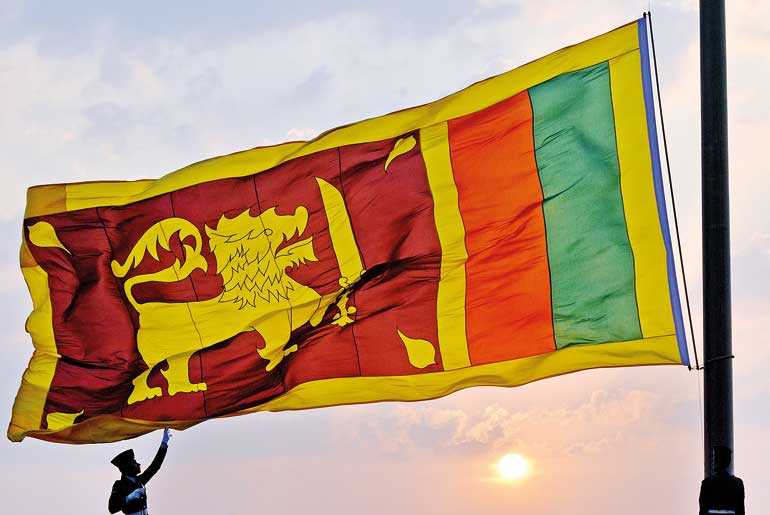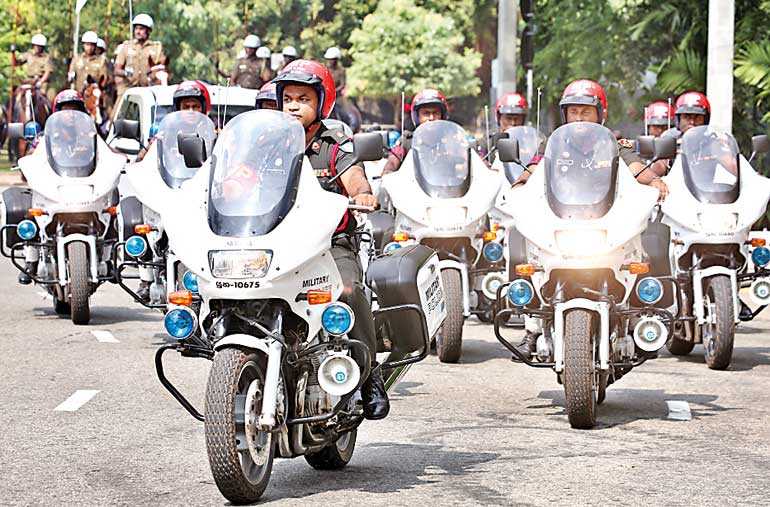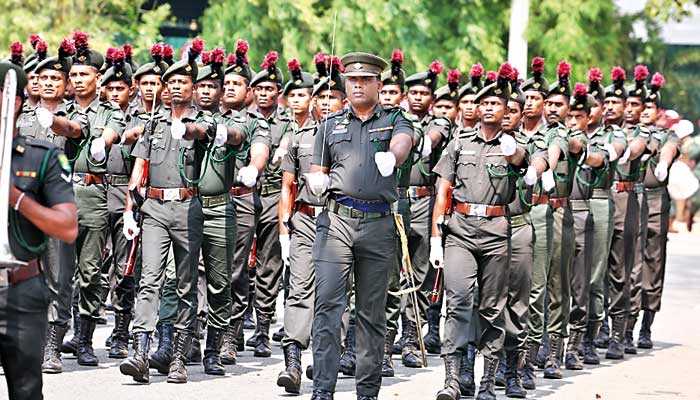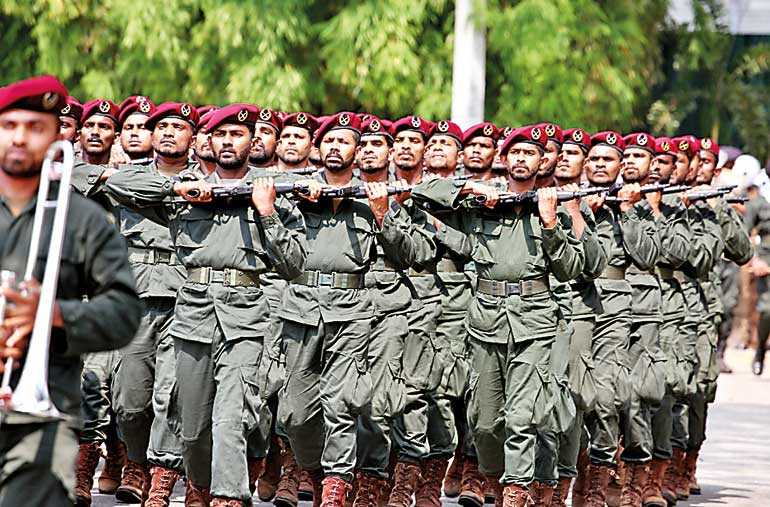Wednesday Feb 12, 2025
Wednesday Feb 12, 2025
Saturday, 1 February 2020 02:00 - - {{hitsCtrl.values.hits}}

In three days Sri Lanka celebrates the completion of 72 years of Independence. Prior to that the country was under several foreign powers for over four centuries
– Pic by Shehan Gunasekara
By D.C. Ranatunga
“It came to pass that in the month of April a ship from Portugal arrived in Colombo, and information was brought to the king that there was in the harbour a race of very white and beautiful people who wear boots and hats of iron and never stops in one place. They eat a sort of white stone and drink blood and they have guns with a noise louder than thunder, and a ball shot from one of them, after traversing a league, will break a castle of marble.”
This is how the Mahavamsa, the Great Chronicle, describes the arrival of the Portuguese in 1505, who with the consent of the King of Kotte erected a factory which they ultimately converted into a fortress.
The Arabs were trading with Sri Lankan products – mainly cinnamon, and a Portuguese fleet sent from Goa to capture some Arab ships, was carried by the current to the harbour of Galle. The arrival of the ship in Colombo took place 12 years later.
Thus a foreign power gained a foothold in Sri Lanka and were to be followed by the Dutch and the British. While the kings who ruled from Kandy (later from Sitawaka too) managed to keep the first two powers away from their territory, the British were able to infiltrate into the upcountry areas helped by the chieftains in the Kandyan king’s court.
Incidentally, the earliest reference to the country’s cinnamon was by Ibn Batuta, the Moorish traveller who visited Ceylon in 1347 on a pilgrimage to Adam’s Peak. He landed at Puttalam and found the shore “covered with cinnamon wood which the merchants of Malabar transport without any other price than a few articles of clothing which are given as presents to the king”.

In his book ‘Sketches of Ceylon History’, Sir Ponnambalam Aruncahalam refers to how the Portuguese gained ground:
“The Sinhalese kings at Kotte, in order to gain the favour of their Portuguese patrons, began to embrace Christianity and adopt Portuguese names. This fashion was largely followed by the people on the coast, and we see the result in the large number of Portuguese names which continue to puzzle the visitors to the Island. Rajasinha (king ruling from Sitawaka) gradually extended his dominions over the greater part of Ceylon. He inflicted a severe defeat on the Portuguese and their Sinhalese allies at Mulleriyawa. He took Kotte and laid siege to Colombo with an army of 50,000 men supported by a naval force.
“This so alarmed the Portuguese commander that in anticipation of a long siege he caused the flesh of those killed to be salted as a provision against famine. Rajasinha was, however, called away by an insurrection fostered by the Portuguese and their Sinhalese adherents. He died in his 120th year of a wound received in battle. ‘Since my eleventh year,’ he said as he neared his death, ‘I have been fighting. No king was able to stand against me, but he who had appeared in the hill country this time is a favourite of fortune, the power of my merit had declined.’ Thus died king Rajasinha who, the chronicle says, ‘had reduced this beautiful Lanka under one canopy’.”
The first Dutch ships commanded by Admiral Van Spilberg appeared in the country’s waters in 1602 and the Sinhalese kings gladly accepted the offer of the Dutch against the Portuguese. The kings soon realised the Dutch were also keen to gain the monopoly of the cinnamon trade.
By the end of the18th century, the British appeared on the scene. In 1782 when Great Britain was at war with Holland, the English East India Company sent a force for the reduction of Dutch possessions in Ceylon. In 1795 when war broke out afresh between the Sinhalese and the Dutch, the king looked to the British for assistance. The Dutch offered little resistance and in 1796 places occupied by the Dutch were ceded to the British. In 1802, by the treaty of Amiens, they were formally transferred to Great Britain.



Rehearsals for Independence Day celebrations 2020 underway at Independence Square on Friday
Discover Kapruka, the leading online shopping platform in Sri Lanka, where you can conveniently send Gifts and Flowers to your loved ones for any event including Valentine ’s Day. Explore a wide range of popular Shopping Categories on Kapruka, including Toys, Groceries, Electronics, Birthday Cakes, Fruits, Chocolates, Flower Bouquets, Clothing, Watches, Lingerie, Gift Sets and Jewellery. Also if you’re interested in selling with Kapruka, Partner Central by Kapruka is the best solution to start with. Moreover, through Kapruka Global Shop, you can also enjoy the convenience of purchasing products from renowned platforms like Amazon and eBay and have them delivered to Sri Lanka.
Discover Kapruka, the leading online shopping platform in Sri Lanka, where you can conveniently send Gifts and Flowers to your loved ones for any event including Valentine ’s Day. Explore a wide range of popular Shopping Categories on Kapruka, including Toys, Groceries, Electronics, Birthday Cakes, Fruits, Chocolates, Flower Bouquets, Clothing, Watches, Lingerie, Gift Sets and Jewellery. Also if you’re interested in selling with Kapruka, Partner Central by Kapruka is the best solution to start with. Moreover, through Kapruka Global Shop, you can also enjoy the convenience of purchasing products from renowned platforms like Amazon and eBay and have them delivered to Sri Lanka.